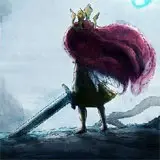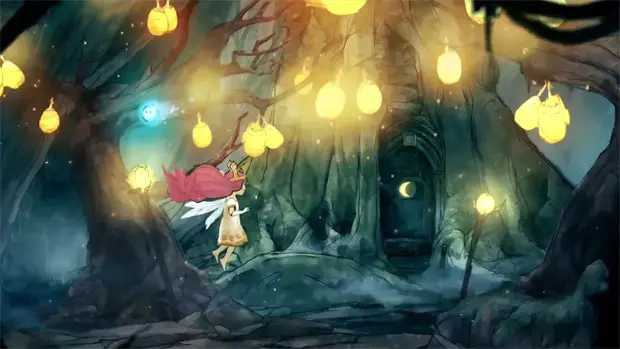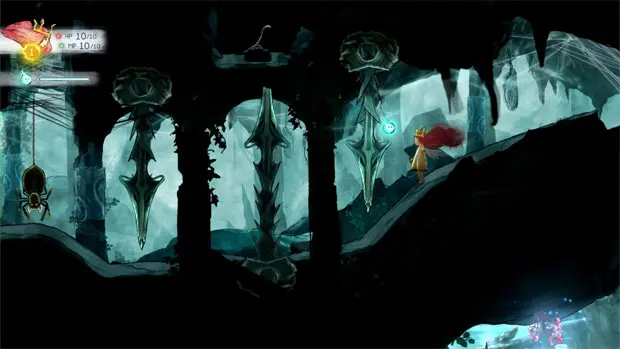 Ubisoft is known for some of the most thrilling, masculine games on the market. This is the studio of Assassin’s Creed and Far Cry and the exciting new IP, Watch Dogs. Even Rayman, the legless hero of his own series of games, is a male (we think) and his adventures are centered on the “male hero saves the day” archetype.
Ubisoft is known for some of the most thrilling, masculine games on the market. This is the studio of Assassin’s Creed and Far Cry and the exciting new IP, Watch Dogs. Even Rayman, the legless hero of his own series of games, is a male (we think) and his adventures are centered on the “male hero saves the day” archetype.
Ubisoft historical precedence is shelved in the action-RPG Child of Light with the introduction of Aurora, an Austrian princess who falls ill and enters a deep sleep, only to find herself in a new, strange world. Armed with a sword and a glowing, firefly-like constant companion named Igniculous, Aurora has to save the sun and the moon and the stars above from the diabolical Queen of Night and hopefully one day return home to her father and her jealous stepmother.
Aurora is joined on her quest by a series of battle companions; each with their own side stories to resolve, and the gameplay is classic side-scroller/platformer. Child of Light’s gameplay is reminiscent of the last few Rayman games like Rayman Origins and Rayman Legends, as all three games run on the French art deco-styled Ubi-art game engine. As the world opens up, I also get a Trine feel from it as well. These are great games for Child of Light to be compared to.
Combat is where Child of Light really shines, as once Aurora comes in contact with an enemy (which can be avoided, mind you), the game shifts to a turn-based JRPG exercise, complete with a Active Time Battle bar much like the popular Final Fantasy RPG series. While selecting attack or magic in turn-based combat isn’t that unique in and of itself, Ubisoft added a new wrinkle where perfectly timed attacks can stagger an opponent, dropping their queue on the ATB bar back. If executed correctly, Aurora and her companion at the time can literally beat a boss character silly without the boss character ever making an offensive move. I know as I’ve done it.
Each character has a progression tree that the player can unlock with each new level. The tree is not linear and the player dictates the character’s progression. There is some strategy involved as certain much-needed buffs, like higher HPs or magical abilities are buried deep in a tree branch that also includes skills and buffs that are not needed. The entire tree can be unlocked with a little extra grinding, as this is an RPG, and grinding is part of the game.

As expected from a game developed from Ubisoft’s core studios (Ubisoft Montreal, Ubisoft Massive, and Ubisoft Bucharest), much time and effort is given to the beautiful art styling and the incredible orchestrated score. Aurora’s long auburn hair flows around her and the tiny gold crown sparkles, even in the darkest cave or thickest woods. Igniculous pops off the screen as a glowing blue orb that can be used to pick up dropped items and mana, and even assist in battles as the player controls the orb independently of Aurora and her battle companion. Igniculous can “distract” enemies, including bosses, which slows down their progress on the ATB bar. Using Igniculous is the key to beating bosses without taking any damage. A second player with a second controller can also play as Igniculous, making Child of Light a multiplayer game, especially with a younger player.

Child of Light was reviewed on PS3 and furnished by Ubisoft for the purposes of this review. It was released as a digital-only download for PS4, Xbox One, Wii U, PS3, Xbox 360, PS Vita and MS Windows on April 30, 2014.


